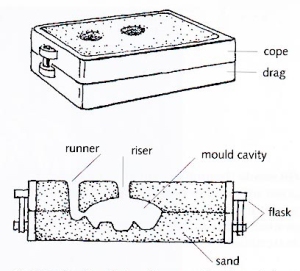 Marc Newson was born in Sydney, Australia. He is a successful industrial designer who works in aircraft design, product design, furniture design, jewellery and clothing. He incorporates a design style known as biomorphism to his various designs. This style uses smooth flowing lines, translucency, transparency and tends to have an absence of sharp edges.
Marc Newson was born in Sydney, Australia. He is a successful industrial designer who works in aircraft design, product design, furniture design, jewellery and clothing. He incorporates a design style known as biomorphism to his various designs. This style uses smooth flowing lines, translucency, transparency and tends to have an absence of sharp edges.Marc Newson’s aesthetic vision and uncompromising originality has won him international acclaim. He has had solo exhibitions at major museums and galleries around the world and holds adjunct professorships in design at Australia and Hong Kong universities.
Today's post on aluminium is about Newson break-through piece, the 1986 Lockheed Lounge Chair, the realization of "a fluid metallic form, like a giant blob of mercury" based "loosely, very loosely" on the 18th century chaises longue he had seen in reproductions of French paintings. Newson made it himself in "a couple of miserable months" of hammering hundreds of aluminium panels on to an home-made fibreglass mould. After the Lockheed Lounge was exhibited at a Sydney gallery, photographs of it appeared in magazines all over the world.
And all thanks to aluminum.
[Via Design Museum]



